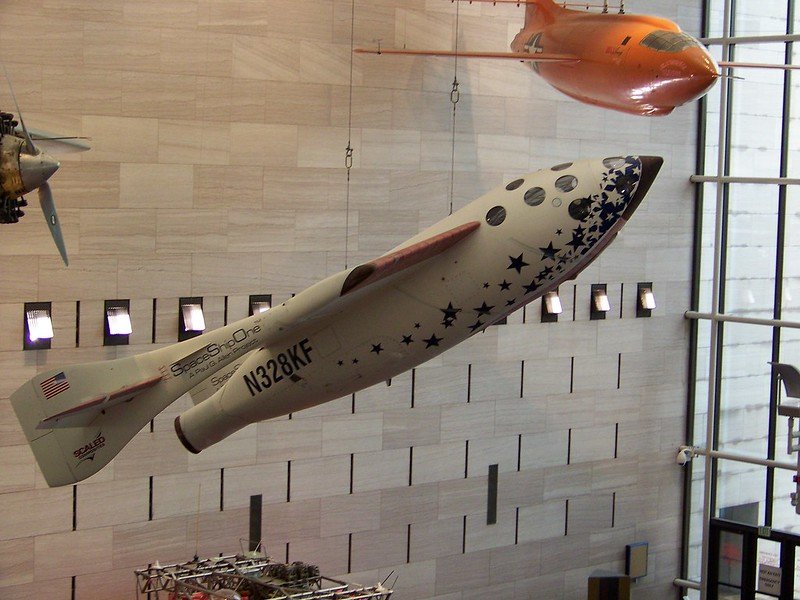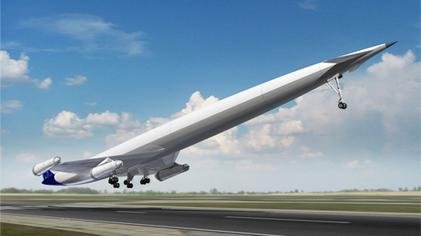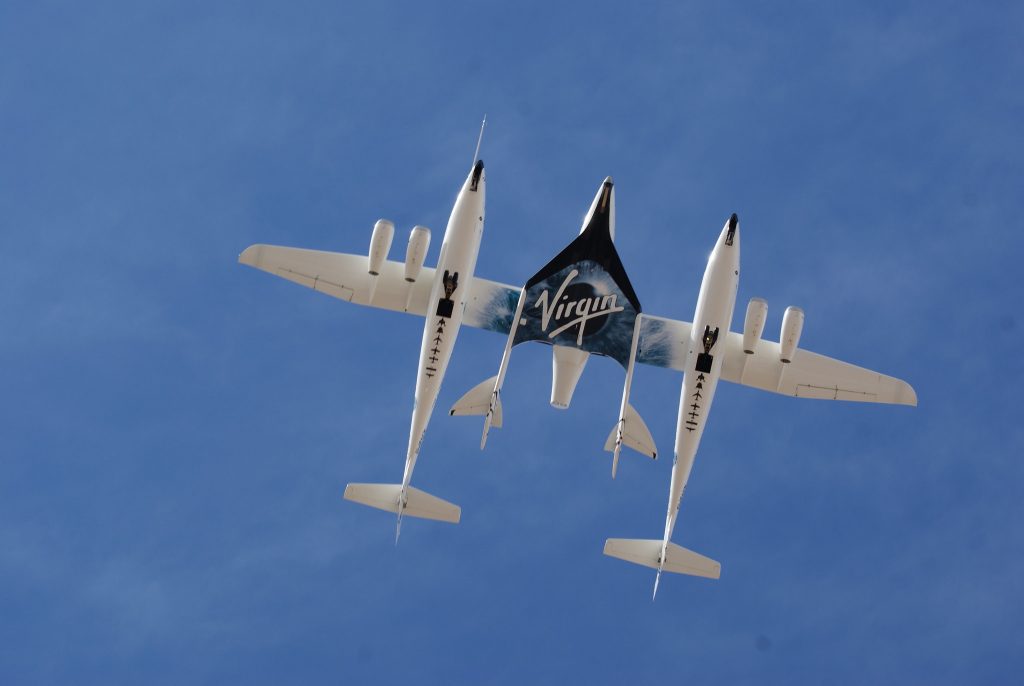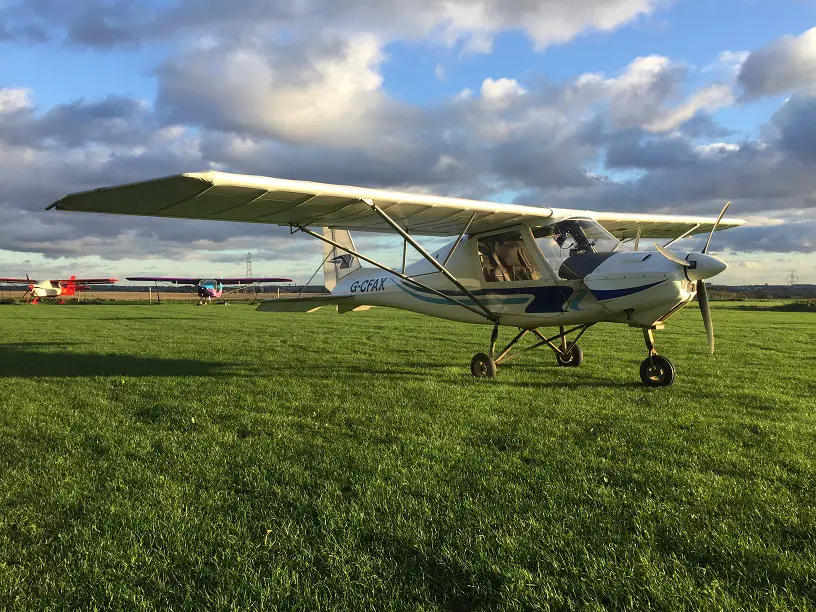Any links on this page that lead to products on Amazon and other companies may be affiliate links and we earn a commission if you make a qualifying purchase. Thanks in advance for your support!
It has been almost two decades since Concorde was retired. Why has there been no replacement and how do we sort the technical, economic and environmental challenges for future supersonic (SST) air-travel?
So, will supersonic air travel return? It will depend on a variety of factors, including the successful development of suitable engines and fuels, attitudes to environmental concerns, and the demand for such travel from the paying public. All these factors are in a state of flux, but serious progress is being made by a wide range of organisations, giving tangible hope to achieving this holy grail.
The greatly admired iconic dart-shaped supersonic airliner Concorde made its final flight in November 2003. Since then high-speed supersonic flying has been the preserve of the world’s military air forces only – it has not been possible to experience rapid flight-times across the globe, such as Concorde’s extraordinary 3.5 hours from London to New York.
Air travel has not progressed far since the technology of the 1960’s in terms of flight speed. Visiting Australia still takes a gruelling 22 hours. For mass travel this is still painfully slow for many. However, based on existing technical capabilities, supersonic air-breathing and hypersonic rocket-powered aircraft could if fully developed complete this journey in just over 4 hours, similar in travel time to a train ride from London to Liverpool.
World travel speeds have remained static since Concorde and for many, although flight prices have decreased in real terms, rapid long-distance mass travel is still an elusive goal.
Near future possibilities
However, despite the world’s economic slowdown, technical solutions are on the horizon for high-speed flight.
New hybrid air-breathing rocket engines such as Reaction Engine’s “SABRE” offer promising solutions to supersonic and hypersonic travel and space research is throwing up new aircraft design innovation.
For example, in 2004 Burt Rutan’s X-prize winner “SpaceShipOne” 3-seat rocket-plane reached the 100km sub-orbit height of 100km (62 miles) with a single pilot occupant. To achieve this, it had to fly at over Mach 3 vertically upwards, before gliding back to a runway landing.

Could rocketry to such extreme heights provide a future answer to SST travel for the future, perhaps even going to hypersonic speeds above Mach 5? Technical challenges being addressed from the 1940-50’s years of advanced aircraft research and development had been met for military and space travel purposes – why couldn’t the civil market benefit from all this research?
In reality, it seems most likely that a post-Covid pandemic world will be more environmentally aware and SST and hypersonic flight research may be slowed-down by the lack of demand for general passenger aircraft production and research.
Indeed, many aerospace analysts believed that it was the aviation market impact during the aftermath of “9/11”, the dramatic world fuel price rises of the 1970’s and the heavy wide-bodied aircraft investment commitments like the A380 in the late 1990’s that seemed to have put-paid to supersonic travel for the medium term future.
The technical challenges of heavy weight and high-power requirements, fuselage skin heating, high fuel consumption and environmental impact fears are formidable and not easy for current SST investment to solve.
Future SST possibilities
Some SST researchers still consider that there will always be a strong desire for high speed travel amongst many in the business community – emails, videoconferences and the internet will never be enough to fully satisfy the needs of face-to-face meetings that the global economy requires.
Despite the post-Covid economic fall-out from 2020, future expanding Chinese and Far–Eastern markets will likely place new demands on long distance journeys for the post-Covid recovery years ahead. Long-distance vacation travel will again increasingly seek distant destinations.
Since the 1970’s there has been a potent environmental lobby against mass air-travel now focussed on slowing global warming and reducing carbon footprints from aviation.
But market demand will begin to rise by the mid 2020’s decade – the trade-off between higher ticket costs and a meaningful reduction in travel time will still be a key factor in air-travel economic analysis.
So, is there potential for safe, cheaper, fuel-efficient and environmentally friendly SST, or even hypersonic, transport achievable?
Concorde and its aftermath

Bernard Goldbach Flickr
The Concorde SST experience is worth examining.
Author of “The Concorde Story”, ex- British Airways captain and Concorde training officer Christopher Orlebar flew several thousand hours as first officer and captain aboard Concorde during the 1980-90’s. Like many in commercial aviation, he considered that when Concorde was retired in Oct. 2003 the world of flying became a much duller place.
Orlebar believed that what made the ceasing of the British Airways/Air France trans-Atlantic service so regrettable was that BA realised afterwards that Concorde had become relatively profitable. BA had achieved revenue of £1.75 billion, with operating costs of approximately £1 billion.
Sadly though, the Concorde SST never properly recovered from the Paris crash publicity of 2000 and the later consequences of the “9/11” trans-Atlantic passenger aviation reduction
Also, Concorde maintenance costs progressively increased and the highly complex engineering systems that were designed for the Olympus-engined passenger aircraft that cruised at Mach 2.04, almost as fast as a speeding bullet, caused serious concern amongst BA and Air France managers.
Orlebar noted how an Air France Concorde had a worrying high-pressure fuel cock leak and fuel loss incident in Feb. 2003 – this resulted in an emergency landing at Halifax, Nova Scotia. After that occurence, fears of technical failures on the ageing aircraft, heavy maintenance costs and Air France operating losses, plus interest in the future A380 development by Airbus, ended future flights for the French. A subsequent BA loss of confidence followed soon after, with many skilled maintenance engineers switching to more conventional long-haul aircraft.
Orlebar noted however how the advanced technology that kept Concorde operational for over 27 years, with fly-by-wire provided, auto-stabilisers and the aircraft’s superb handling characteristics were way ahead of their time.

Whitlst the Russian-built SST, the Tu-144, had to have canard wings for lateral stability, these were unnecessary on Concorde due to its carefully conceived shape. Also, Concorde had no need for a swing-wing for low speeds, like the planned Boeing SST, the 2707.

To the crews who flew it, Concorde was a pilot’s aircraft. However, its limited passenger capacity of 100, a restricted range and heavy fuel consumption meant that it could not compete with the sub-sonic “people carriers” like the evolved Boeing 747 and the later Airbus aircraft.
SST design challenges
Could there be a Concorde successor?
The engineering design problems for an aircraft that can economically fly at least 250 passengers at Mach 2 plus, perhaps involving distances of up to 5,500 miles, are tough.
“Wave drag” occurs at Mach speeds and this can be four times higher than at sub-sonic speeds. Engine power therefore needs to be substantially greater. To date, no design company has fully developed an aircraft engine like the Olympus that can sustain supersonic flight for distances in excess of the 3,500-mile transatlantic crossing.
A further technical challenge is that the SST’s lift/drag ratio has to be low to sustain SST flight – the ratio for Concorde’s was 7.14, whilst a Boeing 747 is 17. For the SST aircraft a plan-form is complex – years of wind-tunnel and computer testing are necessary with an inevitable and expensive design investment.
Skin temperatures of SST aircraft limit their speed. Aluminium construction implies a maximum of about Mach 2 – above this, wing structures require much heavier weight due to the need to prevent excessive wing-flexing. A stainless-steel design could be applied, such as that used for the retired USAF Valkyrie XB-70 bomber – this might allow flight at Mach 3 speeds. Titanium is a possibility, as used for the Lockheed SR-71 reconnaissance aircraft, but at very high cost.
Heavy weight, machining difficulties and high costs for SST aircraft materials have therefore become serious design and economic issues.
Fuel demands
Fuel consumption for SST is a major concern, particularly now that carbon footprints are being reduced for new aircraft.
Concorde could only manage 17 mpg per passenger, whilst the A380 currently achieves 100 mpg. Often quoted by wide-body jet supporters, it is noted that the Boeing 747 carries four times the number of passengers over the same distance for the same amount of fuel as Concorde used – of course, the latest 747’s could only manage Mach 0.85 speeds in a cruise, which significantly below Concorde’s Mach 2.04.
SST aircraft are therefore dogged by an image of excessive fuel use, despite the fact that air travel creates less than 2% of the world’s CO2 output. A further environmental concern is high-altitude flight levels of the SST and potential ozone reduction, plus contrail creation further adding to possible eco impact issues.
For the future of course , hydrogen and biofuels may become economic for SST aircraft, with much less carbon output and climate damage consequences.
Interested in learning to fly a microlight? Check out this article, here.
SST noise impact
The most potent limiter for future SST is considered by many to be its noise impact.
Supersonic booms are considered largely unacceptable over land for most countries and this is a difficult issue to solve. Many note the occasional military jet “booms” that occur when Typhoon interceptor aircraft are scrambled to investigate possible airliner terrorist situations in the UK. Public sensitivity to noise has of course dogged airport locations through the years.
Although airports have become used to relatively quiet high by-pass ratio turbofans in recent times, SST aircraft would be considered a potential concern and would therefore need a much less noisy powerplant than Concorde’s Olympus.
Future SST solutions?
Several studies have occurred to see if an economic solution to SST is possible.
BAe and DASA set-up the “European Supersonic Research Program (ESRP)” in the mid 1990’s, whilst Rolls Royce, MTU, Fiat and SNEMA examined advanced SST engine concepts. Their goal was “Concorde 2”, designed with an enlarged canard-wing 250 seat, 5,500-mile range, Mach 2 airliner. Sadly to many, this project did not progress beyond the 1990’s, mainly due to a lack of investment.
The Japanese JAXA space agency began researching “the next generation SST”, with French involvement .This potential SST aircraft would fly 2-300 passengers, beyond Mach 2, to at least 11,000 km – Concorde’s travel distances were about 6,000 km – with a tenth of Concorde’s noise, a quarter of Concorde’s NOx pollution concentration and at an economic price. A scaled 11.5 m SST model was actually flown from the Woomera rocket range in 2005, successfully providing continuing research data.
Biz-Jet SST possibilities?
Supersonic business jet, known as the “SSBJ’s” are being studied.
One concept involves a radical size reduction, for a 12-seat luxury jet flying at Mach 1.6. SAI and Lockheed Martin studied a “QueSST”, concept, providing a broad aircraft nose to compress the shockwave and a narrower fuselage to expand it. The result is hoped to be 20 decibels quieter than Concorde. It’s all-composite laminar flow/ low drag wing is potentially able to achieve Mach speeds, purely by using standard engine technology.

“SSBJ” research has been maintained by Sukhoi in Russia and Gulfstream, Dassault Aviation, Aerion’s SBJ and Tupolev’s Tu-444.
US airline United announced in 2021 that it wanted to purchase 15 new SST airliners by 2029 from the “Boom” company based in Denver, subject to successful flight trials. Called “Overture”, these new aircraft would rely on “sustainable” flight characteristics ,apparently using biofuels and low-noise operations.
“Boom” have now tested a small prototype SST beyond Mach 1 speeds at Mojave in California, as of early 2025.
A SpaceShipThree ?
Sir Richard Branson’s “Virgin Galactic” company is currently developing the SpaceShipTwo (SS2) sub-orbital space tourism rocket plane – it is also considering the SpaceShipThree (SS3) for future SST or even hypersonic travel.
This small point-to-point SST aircraft would allow for high-priced but business orientated flights across continents and indeed inter-continents, operating at very high altitudes with runways located at remote coastal sites.
Whilst it may be the initial preserve of the wealthy, business orientated SST flight may pave the way to future supersonic mass travel development.
Hypersonic flight next?
The European Union commissioned the UK’s Reaction Engines company to provide a 50 % EU funded study into civil hypersonic flight in 2007 – this was aimed at coming up with a solution to reducing long distance flight times for the run from Brussels to Sydney to 2-4 hours, covering distances of 22,000 km (13,665 miles).
LAPCAT-1 studied “Long-term Advanced Propulsion Concepts and Technologies”. The A2 vehicle was conceived, being designed for sustained flight at Mach 5 speeds and using liquid hydrogen as a fuel.

With up to 300 passengers flying to Sydney, a distance of 11,600 miles, the A2 might achieve flight times of 4.6 hours from mainland Europe – currently this journey involves 22 hours travel time as a minimum. Even more impressive is the idea of a 2-hour transatlantic London to New York flight time, or only 3 hours to Los Angeles using the polar route.
Enter the SABRE engine
Originally based at Reaction Engine’s (RE’s) Culham laboratory in Oxfordshire, engineer Alan Bond conceived the Skylon reusable satellite launcher concept, making use of air-breathing hybrid rocket engines. Bond has had a rich experience of engine and airframe research and development, beginning with Rolls Royce and BAe working on the HOTOL launcher concept and designing variable cycle , air breathing engines to achieve orbital velocities.
The Scimitar engine proposed for the A2 was a derivative of Skylon’s SABRE engine, although it is designed for a much longer operating time, at least to 18,000 hours.
Lightweight heat exchangers in the thermo-dynamic cycle are the key element of the Scimitar engine. A new feature to aerospace propulsion, this secondary operating mode of a high by-pass airflow engine allows for good sub-sonic speed handling and acceptable airport noise .
Hypersonic speeds are very unique and the A2 would need to follow relatively straight flight paths. It would need an 800 mile turn radius, limited to 1.1g for passenger comfort.
Now called Reaction Engines Inc, the company is partly owned by US interests, with UK investment still being maintained. Unmanned cruise missiles are a possible military derivative of the SABRE concept and a small flight demonstrator is being developed.
The Scimitar engined A2 concept is heading closer to the era of space travel with it’s 80,000 ft. operating height, internally cooled composite fuselage skins and making use of fully automatic flight systems with “observer” pilots – “80% of aircraft accidents, it should be noted, are pilot error induced. Flying at such heights, the beginnings of a view of the curvature of the Earth and the blackness of space above will be evident to passengers.
Development costs of the A2 would apparently be similar to the Airbus A380 levels – approximately £14 billion over 12 years.
Flight ticket prices were intended to be the same as a current business class cost for the Sydney journey.
Sonic boom to be solved?
A key factor in the A2’s favour is its ability to fly at sub-sonic speeds overland . This allows speed variation and flexibility, within the straight line flight-path. However despite this, high speed travel to India or Africa is difficult for the A2, due to the lack of ocean space in between.
Agreements with some nations for overland supersonic routes may be achievable in the future. Route variation, limits on flight-path frequency – perhaps to 10 booms a day in rural areas – or following the innovative needle-nosed pre-boom designs that are being tested by NASA may be possible approaches for operations in the future. Using a 50-pascal “boom overpressure” from aircraft like the A2 may be tolerable in certain situations.
The company has admitted that the environmental issues are ever-present – however, using hydrogen as a fuel will make the A2 very clean, though a lot of research is needed into ozone impact and other environmental consequences.
Sub-orbit antipodal travel?
Could regular sub-orbit travel be achievable for Skylon or a new version of the A2?
Increasing speeds and going into a sub-orbit, reaching Mach 5 plus, with point-to-point travel mode, is being considered as a side-benefit of the small space tourism rocket-plane research.
Alan Bond believed that the 4-g rocket-plane ride, followed by several minutes of zero-gravity, would mean that about 50 % of commercial passengers would become sick with such a travel mode. It was therefore considered to be best suited to space tourism and for those who are trained, not for the normal business and tourist flyers who need to do the regular long-distance routes.
However, it could be that the technical and economic attractions of hypersonic travel may mean that the world’s aerospace companies consider by-passing SST Mach 2 Concorde speeds and opt for the jump straight to hypersonic travel. The consequence would be a really shrinking planet.
Alan Bond’s former RE company is therefore progressing its research into a “LAPCAT-2” research phase, with airframe shape approaches and detailed studies for the engine design.
Rocket-powered solutions?
In the US, Elon Musk’s Space-X company, now regularly flying its vertical landing re-suable Falcon 9 launchers, is developing its “Starship” reusable rocket-ship for potential mass travel as well as satellite launching and interplanetary travel.
This vertical landing rocket has flown to 45,000 ft and could one day be developed to fly passengers at hypersonic speeds across the globe commercially.
Whatever happens with SST development, reusable rocketry and environmentally friendly design may well need to be applied as the key future ingredients in the technical solutions to this travel dream.



